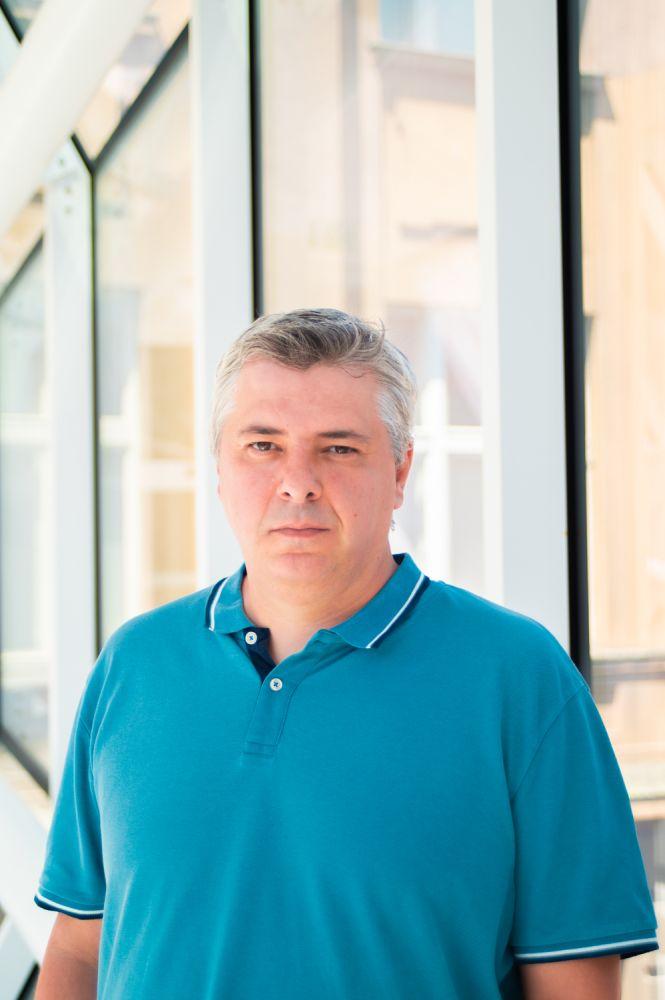
How to get inside a cell? Dr. Mario Vazdar’s project explores arginine behaviour
Cell-penetrating peptides may hold the key to targeted drug delivery, yet the mechanisms behind their passage through cell membranes remain unclear. A new project led by Dr. Mario Vazdar and supported by the Czech Science Foundation (GAČR) aims to uncover the role of the unusual aggregation behavior of arginine-rich peptides in aqueous environments. By combining simulations and experiments, the research seeks to shed light on a fundamental mechanism of cellular biochemistry.
Could you describe your project to a layperson in a few sentences? Why is it important?
Cell-penetrating peptides (CPPs), often rich in arginine amino acids, are used in medicine to deliver drugs in the cell. Since cells are protected by a membrane that does not allow facile transport to their interior, it is a challenge to understand how these peptides are translocated. We are trying to comprehend that using simulations and experiments.
What inspired you to choose this topic? Was it a specific challenge you wanted to address, or a kind of natural continuation of your previous work?
The CPPs that we are studying contain arginine amino acids. Despite the positive charge between them, they are positively charged but have shown a unique ability to self-aggregate in water. This unique ability is due to the arginine side chain, which contains guanidinium (Gdm) cation with similar self-aggregation properties, which we have studied for years. In turn, we are convinced that the unusual aggregation properties of CPPs are connected to their cell translocation ability, but the exact details of this process are unknown.
What is the main goal of your research?
The main goal of the research is to understand the effect of aggregation properties of CPPs on their cell translocation ability. To understand this, we apply a combination of molecular dynamics simulation techniques with state-of-the-art fluorescence methods at our partner institution, which performs experiments on model cellular systems.
What do you think captured the selection committee’s attention the most?
I think that the interdisciplinary and synergistic effect arising from a collaboration between the simulation and experimental groups, combined with a rigorous approach to the problem, was the key factor in obtaining the grant.
Will the project lead to any specific applications or technologies?
Since this project is fundamental in nature and related to understanding the processes at the molecular level, it is challenging to extrapolate immediately whether any specific applications will result from it in the short term. However, understanding the mechanism of cell translocation has been a goal in biology and medicine for decades. Hopefully, the knowledge gained during this period will lead to more applied discoveries in the near future.
What makes your project unique?
This project is unique in the synergistic and complementary approach between simulations and experiments. Simulations are often a simplistic version of experiments, which include many external factors that are often not included in simulations, leading to wrong interpretations. Therefore, we aim to perform simulations more realistically by including those external factors. In other words, we would like to simulate as closely as possible what our experimental colleagues are measuring, i.e., “to speak the same language,” and better understand the results we will obtain.
With whom are you collaborating on the project?
Our co-PIs in the project are the group led by Doc. Radek Šachl, at the J. Heyrovsky Institute of Physical Chemistry in Prague. They are world-recognized experts in fluorescence measurements in model biological membranes.
What obstacles or challenges do you anticipate during the project? Do you already have strategies for overcoming them?
All creditable science is intimately connected to a certain amount of risk. Moreover, we believe that the risk associated with science itself is acceptable and desirable since it frequently leads to unexpected but often very valuable results. In our case, we assessed the risks that can arise from simulations, which may not be powerful enough to predict experimental outcomes. On the other hand, experimental work with cellular models is also very sensitive due to many external factors, which can influence the results. However, we tried to make a convincing contingency plan to provide us with alternative ways to proceed if problems occur.
What brings you the most joy in working on this project?
My greatest joy is the involvement of students in the project. I would like to transfer my knowledge on the subject, hopefully inspiring and motivating them to continue with their own ideas in the future. Also, collaboration with experimental partners and discovering something new and unknown is what the scientist's job should be about.
What theoretically should happen with your research after the project is completed?
As previously mentioned, it is ambitious to state that the results obtained in the project will result in immediate application. However, I believe that during these three years, we will learn enough to continue the research with more realistic cellular models. At that time, we hope to understand the molecular behavior of cellular translocation, which is a powerful asset that should lead to more applicable scientific discoveries.







